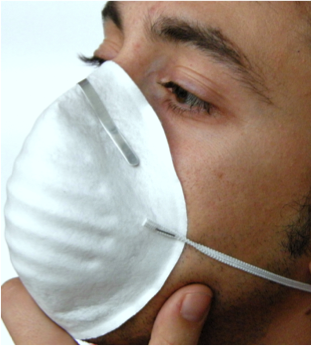Three Categories Influencing Clinical Trial Data Quality
The aforementioned article emphasized that a reduction in data quality ultimately leads to enrolling more clinical trial subjects in order to maintain equivalent statistical power.
In a previous article, we discussed details on how to define clinical trial data quality. The aforementioned article emphasized that a reduction in data quality ultimately leads to enrolling more clinical trial subjects in order to maintain equivalent statistical power. In this article, we elaborate on three categories impacting clinical trial data quality.
Study Design Factors
Environmental factors typically relate to the protocol’s design and the scope of study visit interventions, such as devices and human methods that measure and generate study data. These study measurement origins can create levels of data variances.
For example, measuring the circumference of a lymphedema patient’s arm with measuring tape may vary from one coordinator to another; one coordinator may measure the arm with slack in the measuring tape, whereas another may compress the tape around the patient’s arm, both of which yield variances in data measurements; this can be risky if you have more than one coordinator taking the same measurements on one patient. Another scenario can include differing brands of imaging devices which generate varying data formats, noise frequencies and imaging quality that can be interpreted differently by a medical reviewer.
How to mitigate study design risks: Think about the protocol design and how you can standardize data measurement across the study. If you plan to use a medical device to conduct study measurements, investigate the device’s standardization specifications to uncover potential differences in data quality and frequency. If the measurement technique requires human intervention, consider implementing training programs that delineate appropriate measurement techniques, and limiting the amount of coordinators taking measurements per patient. Minimizing data variances will likely reduce the required clinical trial sample size. This ASE Consensus Statement provides an example of standardizing and managing medical device use for measuring outcomes in clinical trials.
Adverse Event (AE) Noncompliance

Have you ever asked a clinical trial patient whether excessive sweating was an adverse drug reaction? Most likely they’ll think excessive sweating is unrelated to medical product use. According to an analysis of FDA’s Adverse Event Reporting System, adverse events are largely underreported. Additionally, T.J. Sharpe, a cancer patient said in a previous article, “before I started participating in clinical trials, I never paid attention to or worried about reporting adverse events of FDA approved medications.”
Oftentimes, inexperienced clinical trial participants will neither pay attention to, nor recognize the importance of reporting adverse drug reactions in clinical trials. Further, the doctor-patient barrier introduces risks associated with AE noncompliance; “Healthcare professionals aren’t out there to detect adverse events, and I had issues with the dialogue between healthcare professionals,” said Sharpe. AE noncompliance can contribute towards increasing data variances (which reduces statistical power, requiring more patients), and lead towards generating non comprehensive AE profiles.
How to Mitigate AE Noncompliance risks: Implement communications programs with patients and their families to instruct them on how to detect and report adverse events, and to remind them about the importance of timely adverse event reporting; verifying timeliness can reduce statistical variances associated with expected AEs). You may also want to consider establishing AE reporting systems (i.e., call in centers, or web forms), and incorporate WHO’s guidelines for successful AE reporting system implementations into clinical trials.
Patient Nonadherence and Untruthfulness
As much as we would like to think that patients are honest and truthful, the aforementioned comments by Sharpe demonstrate that compliance requirements in medical settings pressure patients, and they subsequently become untruthful, or exercise misconduct. For example, a patient may indicate that they adhered to investigational medical product regiments, however, patient vitals and reported outcomes data would confirm nonadherence; 30% of patients either throw out or do not take investigational medical product in clinical trials.1 Alternatively, patients may

forget to take investigational medical product, and double dose thinking they’re catching up, however, such activities lead to increased toxicity levels, and can result in overdose-related adverse drug reactions; coupled with patient untruthfulness, medical adjudicators can, subsequently, draw irreconcilable conclusions. Other forms of nonadherence include a lack of patient involvement in the trial, such as not adhering to patient reported outcomes requests and not appropriately following study visit procedures.
Nonadherence leads to inconsistency, inconsistency leads to larger statistical variances, and subsequently, enrolling more patients. The causes of patient nonadherence can range from mental stability/health, race and language barriers, access to transportation, financial issues, to name a few,2, 3 but, it is important to recognize that patients are people with busy lives, and researchers should not expect patients to be 100% adherent.
mHealth: Crossing Patient Barriers
The case study above demonstrates that while communications programs can assist with improving adherence, mobile technologies cross many barriers (including cultural and language) and are proven to work. Multinational mHealth studies in Asia, for example, have shown that regular engagement through patient mobile devices have improved medication adherence, reduced nonadherence related symptoms, and even minimized the number of nonadherence related adverse events compared to control groups in healthcare settings.4
Mitigating Nonadherence with Protocol Optimization, Patient/Investigator Centricity and mHealth: Midata Case Study
In this section, Dr. Beat Widler of Widler & Schiemann AG will elaborate on how protocol optimization techniques, patient involvement and mHealth can mitigate patient nonadherence while improving data quality:
Involve patients in clinical trials! Not just as a “patient,” but as a stakeholder and “active participant.” Ask patients to help with designing protocols that meet their needs (especially in long-term studies), make patients understand that the data they are providing will lead to better

medicines, offer them smart apps and other tools to support study execution, and include them in clinical trial training programs. Involving patients may take more time, but the outcome will outweigh the time invested.
There is an ongoing pilot that is evaluating patient involvement in trials at The Department of Neurology of the Zurich (Switzerland) University Hospital with technical support from the Swiss Federal Institute of Technology (ETH-Z, Eidgenössische Technische Hochschule) Zurich.
- The concept of this innovative approach to clinical trials involves the following main elements:
- The study protocol is written with direct patient advocacy group input to ensure patients’ priorities are addressed.
- Through this approach, advocacy groups share protocol summaries (in lay language) with prospective patients.
- If interested, patients are asked to join the Midata Cooperative – a non-profit– and consent to offering the capture of all of their trial data.
- Through the Midata platform, subsequently, patient eligibility is evaluated, and if eligible, the patient is invited to ask his/her treating physician to become an investigator.
- Sophisticated baseline assessments, such as MRIs, will be conducted at the University Clinic while routine assessments are left to the treating physician to minimize patient burden.
- Via Midata and by means of Apps, patients will receive push and pull information to drive compliance to the treatment regimen and to clarify gaps or “oddities” in the clinical data.
- Real time communication between sponsor and patients is enabled through the Midata platform. The firewalled platform is fully compliant with data privacy and protection laws and regulations, and it allows the sponsor to submit queries to anonymized trial participants, and to resolve those data discrepancies and queries without bothering the investigator with trivia while the investigator is also kept in the loop as s/he has access to the section of the Midata platform that is related to the trial.
- Centralized monitoring tools enable the sponsor to conduct data integrity assessments and verify outliers. If gaps or discrepancies are discovered the sponsor can follow up directly with the patient, reducing investigator administrative burden.
The goal of this pilot trial is to demonstrate that sponsors can improve data quality and lower costs by a more systemic involvement of patients in routine clinical trial activities and by converting non-trial participating physicians into principal investigators.
References
1. Patient Non-adherence in Clinical Trials: Could There Be a Link to Post Marketing Patient Safety? Dorothy L. Smith, PharmD, Drug Information Journal, 46 (I) 27-34, 2012
2. Marian U.C. Worcester, Barbara M. Murphy, Virginia K. Mee, Susan B. Roberts and Alan J. Goble. Cardiac rehabilitation programmes: predictors of non-attendance and drop-out. European Journal of Cardiovascular Prevention & Rehabilitation 2004 11: 328
3. Azfar-e-Alam Siddiqi, Alla Sikorskii, Charles W Given and Barbara Given. Early participant attrition from clinical trials: role of trial design and logistics. Clin Trials 2008 5: 328
4. Sahar Khonsari, et al., Effect of a reminder system using an automated short messaging service on medication adherence following acute coronary syndrome. Eur J Cardiovasc Nurs. published 02, February 2014
Photos courtesy of www.freerangestock.com
Unlock Commercial Growth through Data-Driven Patient and HCP Insights
May 2nd 2025Leveraging data-driven patient and healthcare provider (HCP) insights, including social drivers of health (SDOH), is essential for life sciences companies to continuously improve patient engagement and commercial success. Mark Rodgers, AVP of Commercial Analytics at Inovalon, discusses how identifying treatment milestones, assessing HCP performance, and segmenting patient populations using SDOH data can drive targeted strategies that improve healthcare outcomes and market access
Improving Relationships and Diversifying the Site Selection Process
April 17th 2025In this episode of the Applied Clinical Trials Podcast, Liz Beatty, co-founder and chief strategy officer, Inato, discusses a number of topics around site engagement including community-based sites, the role of technology in improving site/sponsor relationships, how increased operational costs are impacting the industry, and more.
FDA Approves Nipocalimab for the Treatment of Generalized Myasthenia Gravis
April 30th 2025Approval is based on results from the pivotal Vivacity-MG3 trial in which IMAAVY (nipocalimab-aahu) demonstrated superior disease control throughout 24 weeks when compared to placebo plus standard of care.